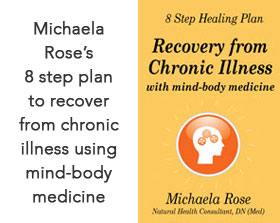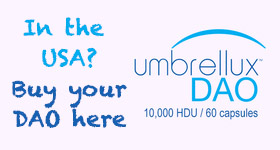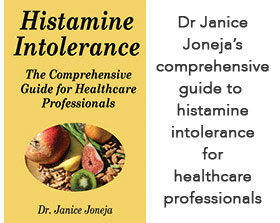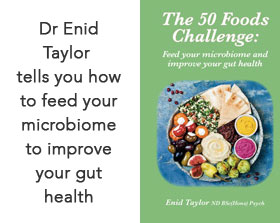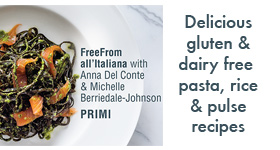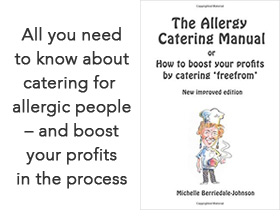|
|
Dairy Free - From Cradle to Grave Infants and Toddlers |
|
In the first part of her investigation into the practical management of dairy allergy, Michelle Berriedale-Johnson looks at coping with dairy free infants and toddlers. |
|
Milk has a great image. Wholesome, comforting, nutritious – it represents everything we cherish about family, community, continuity. But – whose milk ? Humans are the only mammalian species which not only continues to drink milk after it is weaned, but, from birth, drinks the milk of other mammals. Whoever heard, except in fairy tales, of a cow suckling a goat, a dog suckling a cat – yet nobody thinks to raise an eyebrow when we, effectively, allow cows to suckle our babies. This is not intended as a rant in favour of breast feeding or against infant formulas (although breast feeding would certainly seem the more logical option) – merely to suggest that if a substantial number of humans react badly to the ingestion of cow's milk, this should not be a matter for great surprise. Obviously the dairy industry would have you believe that not only is cows' milk very nutritious but that it is a perfectly natural substance for humans to drink. There is no doubt that cows' milk, and cows' milk products, provide a great many nutrients (proteins, essential fatty acids, vitamins, minerals) that humans need and are a valuable food source, especially as they can be preserved (as butter, cheese etc) for times of scarcity. Yet that should not be allowed to obscure the fact that humans, and especially human babies whose digestive and immune systems are still immature, were designed to drink human milk – and may reasonably be expected not to tolerate anyone else's. Atopy It is widely accepted that your chances of suffering from allergy are much higher if allergy runs in the family. A baby born of one allergic or ‘atopic’ (prone to allergy) parent has a 20-40% chance of being allergic; a baby born of two allergic parents has a 40-60% chance. The digestive system of a new born baby is intentionally ‘leaky' to allow important antibodies from its mother's milk though into the bloodstream. Meanwhile its protective immune system which will prevent it from reacting to essentially harmless substances (such as cows' milk proteins) is not fully developed. An infant with an atopic genetic inheritance, if brought into contact with any ‘foreign protein' (not just milk but any food) before it is ready, may become sensitised to that food (or food protein) so that it will continue to react adversely to it in the future. This is why it is so vitally important that new born babies from atopic families should, whenever at all possible, be breast fed and that breast fed new born infants should never be given ‘top up' feeds. Well meaning nurses in busy maternity wards will give the baby a bottle if the mother is tired or if she is having difficulty breast feeding. But that one bottle could be enough to sensitise that baby to cows' milk for life with all the attendant problems that brings. Milk protein allergy or lactose intolerance? Babies – and indeed adults – who react to cows', or other animals' milks could be reacting to the proteins in the milk (there are over 20 potentially allergic proteins in milk), but could also be reacting to the lactose, a sugar found in all animal milk, including human. A reaction to the proteins, especially in small babies, will almost always be an immune system reaction which may resolve itself as the child gets older and the immune system matures and becomes ‘more tolerant. But often, while appearing to disappear, it merely changes into a different type of allergy – see the ‘'allergic march' below. Lactose sugar requires the enzyme, lactase, in the gut to digest it. In very rare instances the baby does not produce any lactase. (A baby who suffers severe symptoms from birth should be tested for this.) Far more often either the baby does not produce sufficient lactase to cope with very large feeds, or the lactase in its gut has been washed out by a stomach upset and a bout of diarrhoea. As a result undigested lactose sugar is left in the gut to ferment causing pain (colic) and further diarrhoea. Smaller, more frequent feeds (requiring less lactase to digest), the addition of a lactase supplement (such as Colief) to expressed breast milk, or a lactose free formula milk (see below) should solve the problem. Children who stop having dairy products once they are weaned (as in the Far East and much of Africa) stop producing lactase and will suffer diarrhoea if they drink milk although, if they persist, the lactase enzyme may gradually re-establish itself. Colic Medical opinion is divided on the subject of colic. Some experts believe that first babies cry more for the first three months of their lives because their new mothers are nervous and anxious and are communicating this to the babies. Others believe that infants only cry when they are hungry, cold, uncomfortable (wet or soiled) or in pain. Colicky babies cry continuously, even when they are fed, warm and dry and so are presumably continuously in pain. Assuming that there are no other obvious problems (and you should check with you GP or health visitor), then food intolerance may be the answer. And for a newborn that can only be an intolerance to the milk it is drinking. For bottle fed babies, the problem is most likely to be an allergy to cows' milk proteins. If full time breast feeding is not an option then experiments with alternative formulae (see overleaf) would be in order. However, it is worth noting that around 30% of cows' milk intolerant/allergic babies will also be allergic to soya so it may be better to go for a goat or a hydrolysed formula. However, colic is not exclusive to bottle fed babies; sensitive breast fed babies can react to cows' milk and other proteins in their mother's milk so it is important that, in this case, the mother too follows a strict cows milk free diet. The 'anxiety' camp point out that the crying often abates after three months, but that may only be because the baby's system has learned to adapt to the problem food. Although the colic symptoms may disappear the sensitivity will remain and may start to manifest itself in other ways – eczema, digestive problems etc. The Allergic march or cascade It is generally agreed that a high proportion of allergic infants and toddlers will lose their allergies as they grow towards their teens and this certainly applies to cows' milk allergy/intolerance. However while some immune systems may genuinely mature to the point where they can deal with potential allergens such as cows' milk, for others the symptoms may change but the underlying atopy or sensitivity will remain. Thus the colicky baby who reacted to cow's milk may suffer from eczema as a toddler. In turn the eczema may disappear only to be replaced by a permanently runny nose or wheezing and asthma in their teenage years. Even these may disappear in early adulthood, but that person would be well advised to remain allergy aware and to avoid situations, lifestyle or occupations which are likely to re-ignite their allergy. Anaphylactic reactions Although dairy allergy in small children is frequently an immune system reaction and small babies do suffer from anaphylactic shock (as all too many of our readers can testify) fatal anaphylaxis in small babies is extremely rare. Toddlers and young children Even if your toddler appears to have ‘grown out of his or her allergy, it is worth minimising their intake of cows' milk without the disruption to ‘normal life that banning it completely may cause. This will reduce the risk of the original allergy transmuting into another allergic reaction. If your child can tolerate a small amount of dairy products without ill effects then keeping a dairy free house will mean they will be able to eat a small amount of dairy at school, visiting friends, at birthday parties or going away on holiday. This will make everyone’s life very much easier and reduce the chances of them feeling excluded or being picked on by friends at school. You may also find that although your child continues to react to raw milk, they can tolerate yogurt or cheese quite well as in both cases the proteins have been broken down, and thereby become more easily digestible, in the process of fermentation and maturation. Obviously, if reactions remain severe you will need to be extremely vigilant in excluding all forms of cows' milk whether at home or abroad. In the second part of this article in the June issue we will give a list of ingredients that you will need to watch out for and a list of the amazing range of unlikely products in which you may find either cows' milk proteins or lactose – as well as some ideas for alternative ingredients and dishes. Nutrition and supplementation Meanwhile, since cows' milk does contain many of the nutrients, especially calcium, which are essential for proper growth, you need to ensure that your child is getting their full complement of vitamins and minerals. Bony fish, leafy green vegetables, broccoli, soya beans and almonds are the traditional vegan sources of calcium but since these foods may not be exactly what your 3 year old will relish, using a fortified soya milk or a calcium supplement which also contains magnesium might be more appropriate. Most of the supplement companies which specialise in allergy free formulations have children's ranges which will provide the necessary amounts. However, take care buying over the counter standard supplements as many of them may contain lactose and other dairy proteins. Alternative infant formulas Your doctor, paediatrician or health visitor will be able to give you more information about the various formulae available. Nonethless, always check all ingredients carefully. Goats milk Although goats milk is also an animal milk there are immunological differences between it and cow’s milk so it may be tolerated by some babies who cannot handle cows’ milk. Nanny Goat infant formula comes from free range New Zealand and is free of sucrose and glucose syrup. Check out www.vitacare.co.uk or call 0800 328 5826 for stockists. Soya formula Although around 25% of US babies are fed soya formula only around 2% of UK babies get it. The jury is still out on whether the high levels of naturally occurring phyto-oestrogens in soya could have an adverse effect on the hormonal development of children - those in favour of soya point to the enormous amount of soya consumed by far eastern populations without any apparent adverse effects for many millennia; those against point out quite rightly that high phyto-aostrogens can disrupt hormonal development and that far eastern populations do not feed soya to infants with immature digestive and hormonal systems. Maybe, as in all such cases, it is better to apply the precautionary principle and only use soya if there is no other option. Brands: Cow & Gate, SMA, Mead Johnson and Farleys all make soya infant formulae however you need to check the ingredients to ensure that they do not contain any dairy proteins (casein, lactalbumin etc) or lactose. Lactose free formulae SMA among other make a cows' milk formula from which the lactose has been removed. Check with your health visitor. Hydrolysed formulae Hydrolysed formulas are made from cows’ milk, cornstarch and other foods which have been treated with digestive enzymes so that the milk proteins are partially broken down and are therefore much easier to digest. They can be casein or whey based, the whey being suitable for more allergenic babies. However this is still not suitable for babies who are highly sensitive or have suffered an anaphylactic reaction to milk. Brands – Enfamil Pregestimil, Nutramigen, Pepti-Junior, Alimentum Elemental formula In this formula the proteins have been broken down entirely into amino acids and mixed with vitamins and minerals. They should be suitable for babies with extreme food protein sensitivities. Brands: Elecare, Neocate First published in 2004
|

